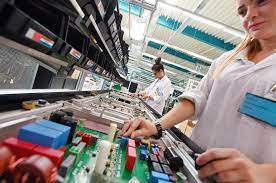This complexity adds a layer of intricacy to the fabrication process, as it requires precise alignment and drilling of holes, known as vias, to connect different layers. These vias serve as electrical highways, allowing signals to travel between layers and components. , turnkey pcb assembly fabrication remains at the heart of the process, ensuring that our devices are not just functional, but also reliable and robust.
Quality Assurance and Testing No PCB leaves the fabrication facility without undergoing rigorous testing and quality assurance procedures. These tests include checks for electrical continuity, solder mask integrity, and component placement accuracy. Any defects or imperfections are meticulously addressed, ensuring that the PCB meets the highest quality standards before it enters the market.
The Evolving Landscape The field of PCB fabrication is not static; it’s continually evolving. Innovations in materials, manufacturing processes, and design tools are driving the industry forward. Miniaturization, for instance, has enabled the creation of smaller and more efficient PCBs, perfect for portable devices and wearables. Advancements in surface mount technology (SMT) have made it possible to densely populate components, enhancing functionality without increasing board size.
Conclusion PCB fabrication is both an art and a science, where creativity and engineering expertise combine to bring electronic devices to life. In an era of constant technological advancement, the demand for smaller, faster, and more efficient PCBs is on the rise. Understanding and appreciating the precision and dedication that go into the fabrication of these critical components is essential in our ever-connected world. As the electronics industry continues to push the boundaries of innovation
